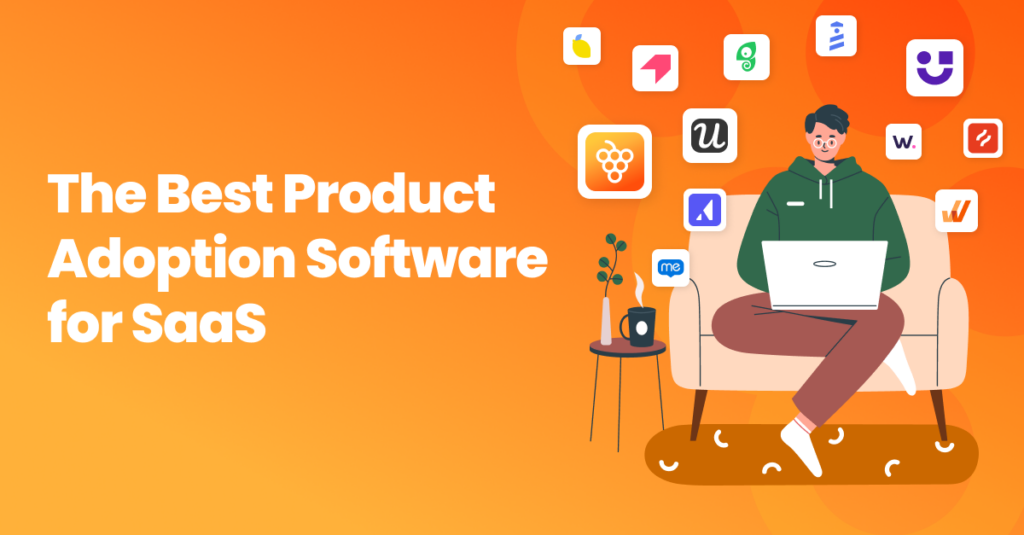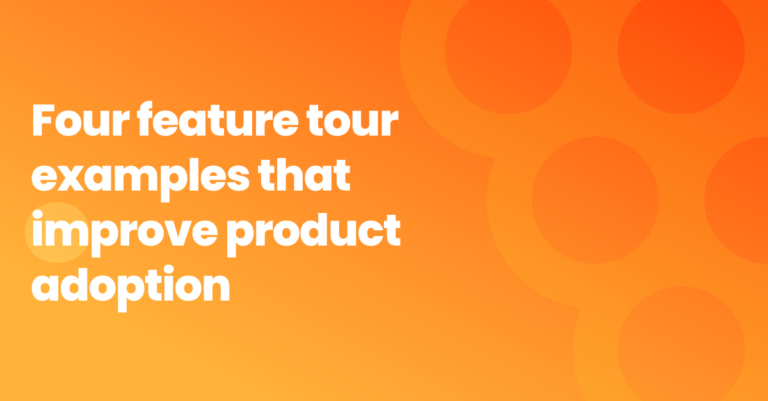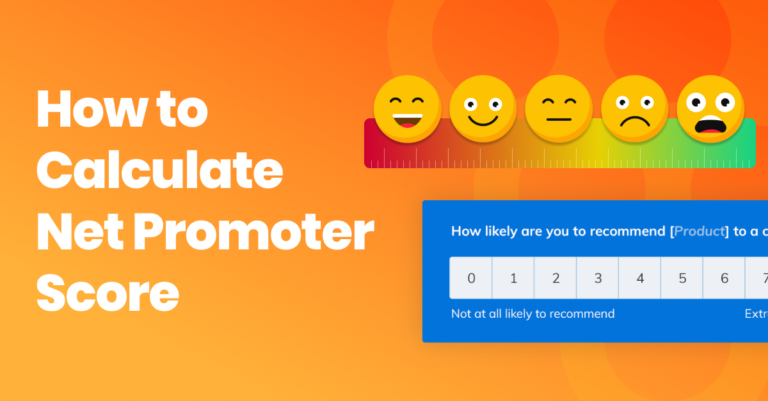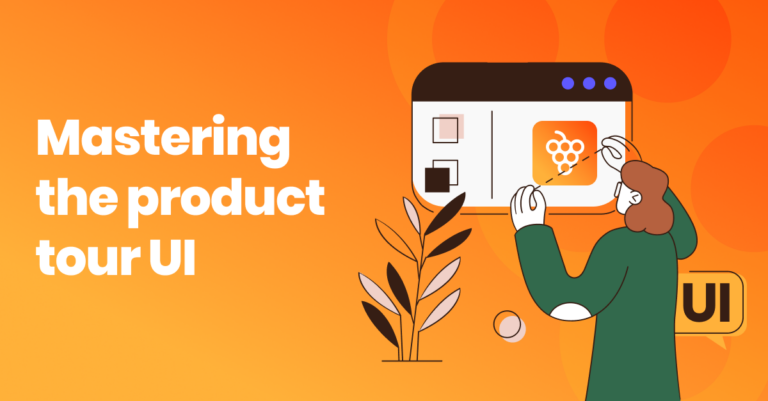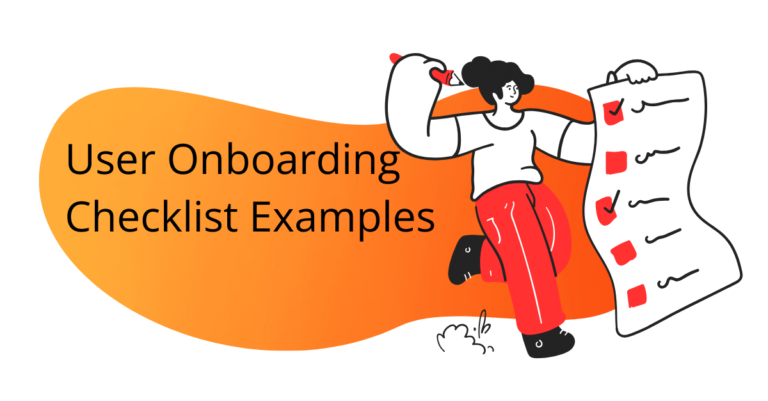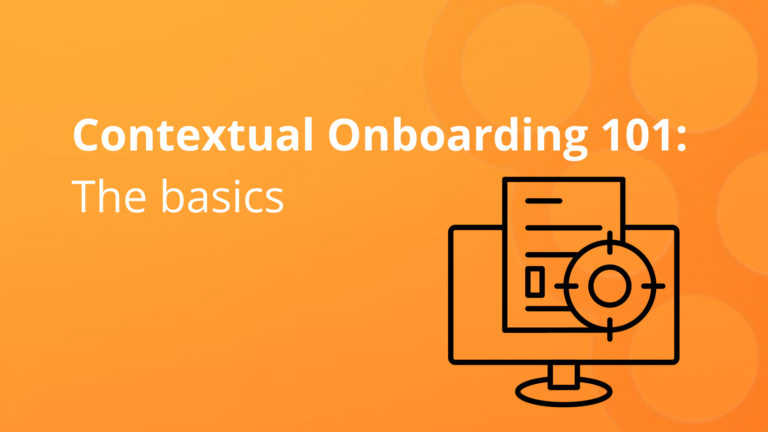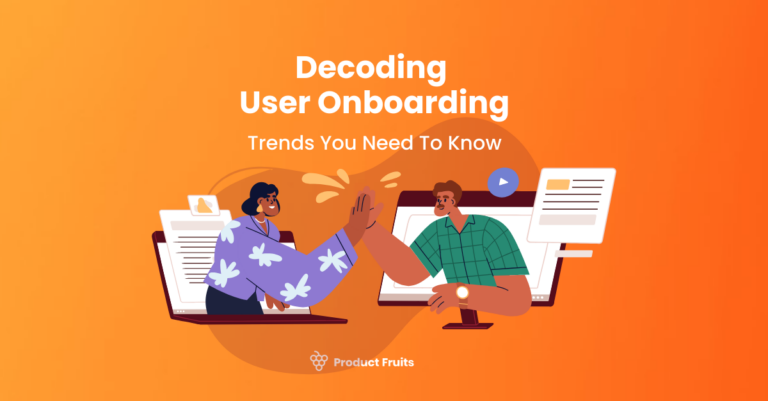Are you tired of struggling with user onboarding and adoption? Product adoption software can relieve that burden.
We’ve researched for you so you don’t have to wade through a sea of tools. The right product adoption platform will streamline your process, guiding users through your product and handling the heavy lifting of getting them fully onboard.
In this article, we’ve compiled a list of 12 top product adoption software tools that will boost user adoption and smooth out the onboarding process—allowing you to focus on what truly matters: growing your product.
Dive in to explore the features and benefits of our 12 picks. If you’re in a hurry to create your first onboarding flow that will help out, here’s your quick-start free trial link. 👈
Top 12 product adoption platforms
When choosing a digital adoption platform, it’s crucial to find one that aligns with your business goals. We’ve compiled a list of 12 top-rated platforms, each offering unique features to streamline user experience and boost product adoption. Whether your focus is employee training, customer onboarding, or data analytics, these tools support digital growth.
Product Adoption Software #1: Product Fruits- Best all-in-one product adoption tool for web apps
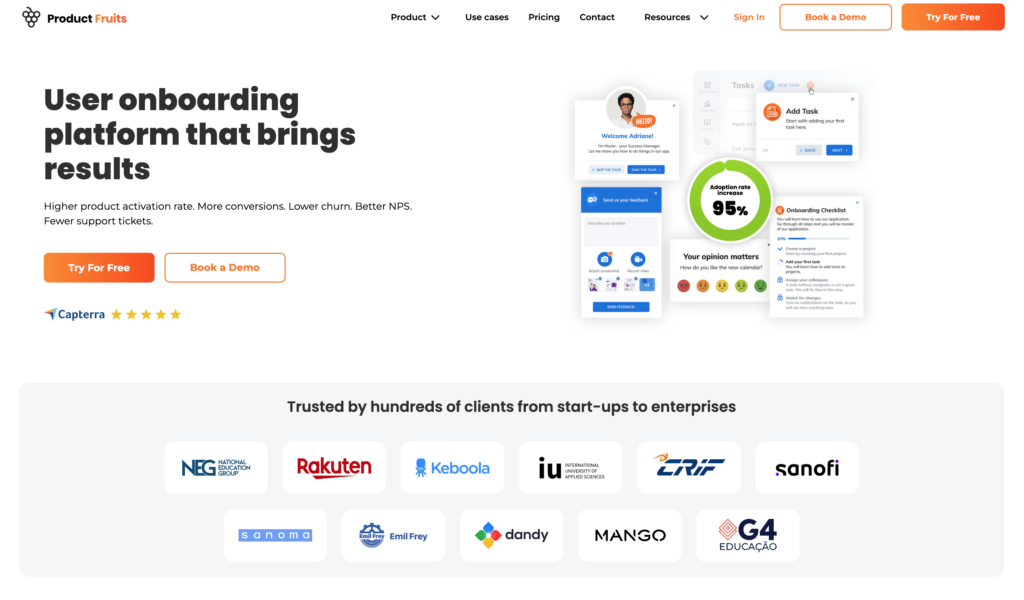
Product Fruits is a no-code user onboarding platform that guides users through web apps. Its features simplify navigation and boost product adoption. Our features and user feedback demonstrate why Product Fruits leads the pack.
Product Fruits stands out from other product adoption platforms with the recent introduction of AI-powered onboarding. This feature allows you to generate tours and walkthroughs automatically in seconds. Additionally, it offers personalized flows tailored to different user personas or product versions. Teams can leverage built-in analytics to track user behavior, set custom events, and measure the performance of onboarding elements.
Here are some of the key features:
- AI-powered assistance: Quickly designs onboarding tours, creates pop-up announcements with text and images, and refines microcopy during onboarding.
- Interactive product tours and walkthroughs: Guide users through your UI step-by-step
- Announcements and pop-ups: In-app announcements inform users about new features, updates, or changes. You can segment these to fit different user journey stages so the right message gets to the right people.
- Surveys: Use NPS, CSAT, and welcome surveys to collect valuable user feedback. Our variety of survey templates and logic branching allows you to gain insights or customize the user onboarding experience from scratch.
- Hints and tooltips: Provide contextual help throughout the app with well-placed hints and tooltips.
- Life ring button: Integrate with your chat widget and offer users quick access to a knowledge base or support content.
- Knowledge base: Launch a knowledge base on your domain, and keep all your help resources in one easily accessible place.
Pros:
- The customer support team is known for its rapid response times and in-depth problem-solving approach. They take the time to understand your business challenges and offer creative, practical solutions beyond simple troubleshooting.
- Custom rules and segmentation features provide a tailored onboarding experience for different user groups.
- Product Fruits offers multilingual tour creation for a global audience. This feature enhances accessibility and user appeal.
👀 Take a peek at Why We Built the Best-In-Class Debugger For Product Adoption Flows
Cons:
- Product Fruits focuses on user onboarding rather than employee onboarding and company training.
- While Product Fruits offers analytics and integrates with most platforms, optimal results come from integrating it with clients’ analytics for deeper insights.
Pricing:
Product Fruits have options to fit businesses of all shapes and sizes. It has three different pricing levels:
- Core: $79/month (up to 1500 users) This plan is perfect for startups and small teams. It includes all the essentials, such as tours, checklists, hints, and basic integrations.
- Boost: $139/month (up to 1500 users) For growing businesses ready to kick things up. Adds NPS surveys, custom events, AI writing assistance, and more.
- Enterprise: Custom quote The whole enchilada. SAML SSO, custom integrations, security audits – you name it, we’ve got it.
Core and boost plans come with a free trial, so you can try Product Fruits before committing. Our pricing is transparent—there are no hidden fees or surprises down the road 🙂
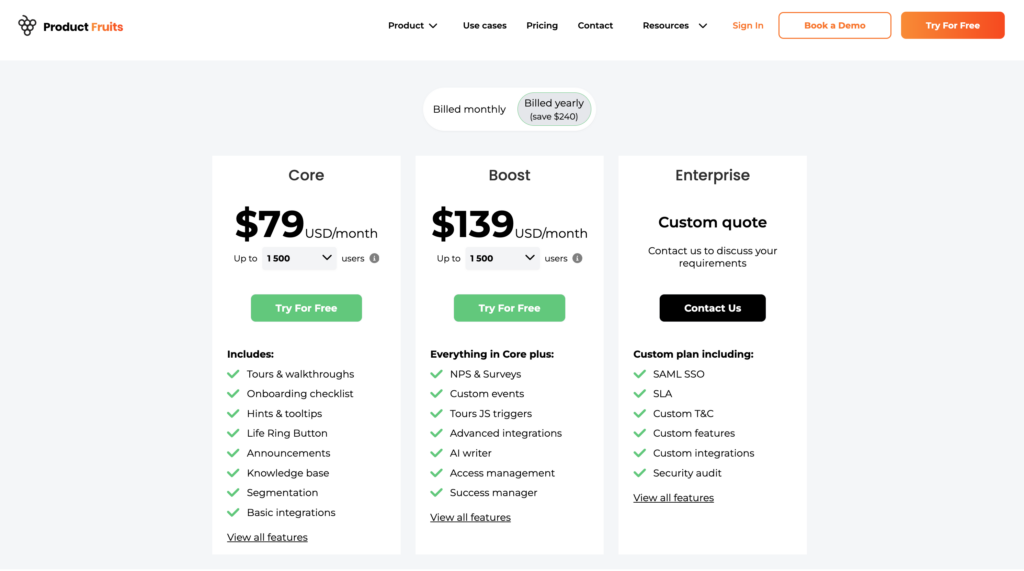
Product Adoption Software #2: Pendo- Best for deep analytics capabilities
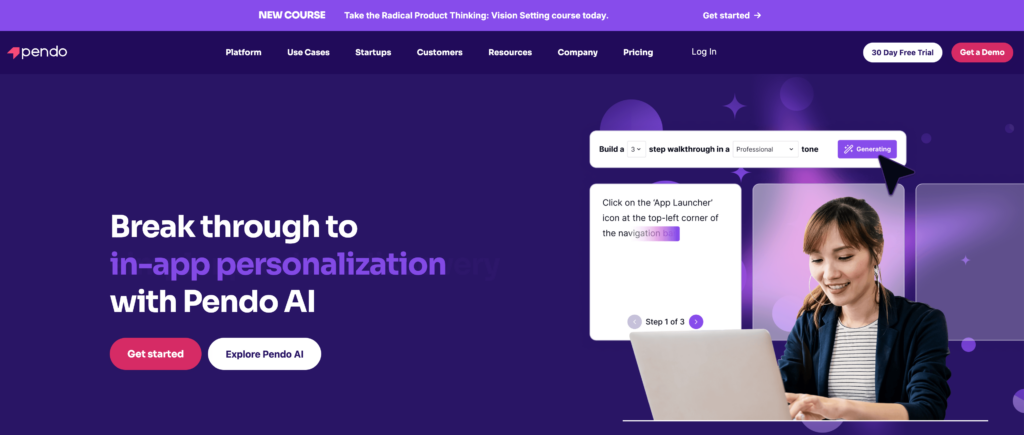
Pendo is a product adoption platform designed for SaaS businesses that need detailed analytics, in-app guides, and tools for gathering user feedback. With granular data, teams can track how user segments interact with various features, including detailed metrics like feature stickiness and overall adoption rates.
It offers features like:
- Session replays
- In-app guides
- User feedback collection
Pros:
- It works seamlessly across web, mobile, and even internal apps, giving a unified view of user interaction.
- Enables targeted in-app messages and insights by segmenting users into specific groups.
Cons:
- There is no option to import historical NPS data, which results in the loss of valuable insights.
- The subscription price is too steep for startups, which makes it challenging to justify the expense.
Pricing:
Pendo provides various pricing options to meet different needs. Their entry-level plan, Pendo Free, includes product analytics, in-app guides, and NPS surveys for up to 500 monthly active users (MAUs).
Market research shows that Pendo.io uses a headcount-based pricing model with several tiers. Prices range from $25,800 to $132,400, while Pendo Feedback costs between $12,500 and $86,800. The pricing and features vary across tiers to cater to businesses of different sizes and needs. For specific pricing information, it’s best to contact Pendo directly.
Product Adoption Software #3: WhatFix- Best for internal and external product adoption
Whatfix is a digital adoption platform known for its ability to create interactive guides and tutorials within SaaS applications. It simplifies user onboarding and product adoption by delivering personalized in-app experiences to help users understand complex workflows without external documentation.
It offers features like:
- Interactive walkthroughs
- In-app guidance and pop-ups
- Analytics dashboard
Pros:
- Offers easy-to-implement, interactive training tools that reduce dependency on technical support teams.
- The platform supports various integrations and is user-friendly, with minimal setup time.
Cons:
- The platform’s analytics setup is not as intuitive as its core features and may require additional effort to extract detailed insights.
- Content organization can be somewhat challenging for larger web applications with multiple workflows.
Pricing:
Whatfix’s pricing varies depending on the number of users and the complexity of the implementation. But based on our market research, its pricing plan starts at $199.
For more detailed information, businesses are advised to contact Whatfix’s sales team directly to determine which plan suits their needs.
Product Adoption Software #4: UserGuiding- Best for affordable no-code onboarding
UserGuiding is an onboarding platform designed for teams seeking a simple tool to guide users through their product experience. Its main strength lies in its intuitive builder, which allows users to quickly create onboarding flows like checklists, tooltips, and models. Additionally, it offers segmentation options and basic analytics, which help track user interactions.
It offers features like:
- Segmentation
- Checklists
- In-app onboarding guides
Pros:
- Users appreciate the intuitive interface and quick setup, which allows them to create interactive guides and tooltips with minimal hassle.
- Easy branding and visual customization of messages.
Cons:
- The branding on lower-tier plans cannot be removed, which may not be ideal for teams looking for a fully white-labeled experience.
- It lacks support for native mobile applications, restricting usage to web apps only.
Pricing:
UserGuiding offers tiered pricing plans. The Basic Plan costs $89/month and offers basic in-app guidance and analytics features. Their Professional Plan, at $389/month, includes advanced features like dynamic personalization, integrations, and removing UserGuiding branding. A Corporate Plan is available for larger enterprises with custom pricing and extended features such as team member management and priority support.
Product Adoption Software #5: Chameleon- Best for highly customizable onboarding
Chameleon builds highly customizable and personalized in-app user experiences. Its core strength lies in its flexibility for creating user onboarding flows, tooltips, and surveys with deep customization options that cater to more complex SaaS products. Chameleon stands out for teams that require more control over the user experience and want to create highly targeted, dynamic product tours based on user behavior.
It offers features like:
- A/B testing
- Advanced segmentation
- In-depth customization
Pros:
- A/B testing helps product managers optimize user flows and improve engagement based on data.
- It integrates smoothly with various tools, such as Segment, Mixpanel, and Google Analytics for in-depth insights.
Cons:
- Limited in-app support and guidance can make troubleshooting more difficult during the initial setup.
- Its cost is higher than similar platforms, which may be restrictive for startups or smaller businesses.
Pricing:
Chameleon’s pricing is based on usage and features, with custom plans for larger enterprises. It offers a free plan for feature exploration and a free trial for a Startup plan. The basic plan starts around $279/month for up to 2,000 monthly active users. For teams requiring more advanced features, such as A/B testing or more MAUs, pricing increases accordingly and is available upon request.
Product Adoption Software #6: Appcues- Best for intuitive no-code user flows
Appcues makes it easy to create custom onboarding for users through product tours and in-app guides. Its main strength is its user-friendly design, which lets teams without tech skills build tailored user flows with a simple drag-and-drop tool. Appcues works on web and mobile apps so that companies can reach users on different devices.
It offers features like:
- User segmentation
- In-app onboarding flows
- NPS surveys
Pros:
- Advanced segmentation options enable highly targeted onboarding experiences.
- An easy-to-use interface makes it simple for non-technical teams to set up and deploy product tours.
Cons:
- Some users have reported that more complex flows can be harder to manage and optimize without developer support.
- Limited design customization compared to other platforms can be a drawback for companies with strict branding guidelines.
Pricing:
Appcues offers three tiers: Essentials, Growth, and Enterprise. The Essentials plan starts at $249/month, covers up to 2,500 monthly active users, and includes core features like onboarding flows and basic analytics. For more advanced capabilities, such as deeper integrations, NPS surveys, and higher usage limits, Appcues offers custom pricing for its Growth plan and Enterprise plan.
Product Adoption Software #7: WalkMe- Best for enterprise-level digital adoption
WalkMe helps companies simplify complex software and onboard users more efficiently by offering on-screen guidance and step-by-step workflows. Its strength is facilitating employee training and user onboarding across multiple web and mobile platforms with minimal technical effort.
It offers features like:
- User analytics
- Employee onboarding and change management
- Cross-platform support
Pros:
- Reduces the need for additional training resources by providing on-screen help.
- It is highly customizable with intuitive triggers and flows, which makes setting up and training others easy.
Cons:
- The drag-and-drop editor can feel clunky and less intuitive.
- Requires CSS skills for deeper customization of tooltips and UI elements.
Pricing:
WalkMe operates on a custom pricing model based on business needs and scale. While exact pricing details are not publicly available, estimates suggest that annual costs typically range from $9,000 to $50,000, depending on monthly active users.
Product Adoption Software #8: Userpilot- Best for in-app user experience tracking
Userpilot helps product teams build personalized in-app experiences that guide users through key steps in a product. It focuses on behavior-driven triggers, meaning the product reacts to what users do in real time to offer support at just the right moments. You can also run A/B tests to see what works best and gather direct feedback from users through built-in surveys.
It offers features like:
- Behavior-based triggers
- Flow builder
- User segmentation
Pros:
- Behavior-driven triggers allow for personalized, real-time user guidance based on specific actions within the app.
- Visual flow builder enables non-technical teams to create custom onboarding experiences without coding.
Cons:
- Limited third-party integrations beyond basic options like Google Analytics and Segment.
- Hosting for EU data is only available with the Growth plan ($749/month)
Pricing:
Userpilot offers three plans to fit different business sizes and needs. The Starter plan ($249/month) covers basic features for small teams. The Growth plan ($749/month) adds more advanced tools for expanding companies. The Enterprise plan (custom pricing) provides all features plus extras like custom roles and premium support, which are suited for large businesses with complex requirements.
Product Adoption Software #9: Userlane- Best for employee training automation
Userlane is ideal for companies looking to simplify software onboarding and user training. It has an amazing feature called “Userlane Assistant,” an intelligent helper that provides context-specific support, answers questions, and offers guidance precisely when users need it. It also has built-in analytics that helps teams gain insights into user interactions with these guides.
It offers features like:
- Behavior-based guidance
- Customizable learning paths
- Analytics for user engagement tracking
Pros:
- The Assistant adapts to user behavior and offers personalized guidance.
- It’s the perfect fit for businesses focused on employee onboarding and training.
Cons:
- The analytics export options are limited, and the number of user segmentations in lower-tier plans is restricted.
- Some advanced features may be locked behind higher-priced plans.
Pricing:
Userlane offers custom pricing depending on users and applications. No free trial is available. It’s best to ask Userlane’s sales team for an exact quote.
Product Adoption Software #10: Lemon Learning- Best for customized in-app guides
Lemon Learning is a platform that helps companies improve how employees learn to use software. It offers step-by-step guides and tools to create custom training content. The system can automatically show relevant guides based on user actions. Companies can use it to send updates about new features or training materials. Lemon Learning also allows for personalized content delivery based on user roles.
It offers features like:
- 24/7 access to a resource library
- Easy-to-use editor for non-technical users
- Real-time guide triggering and smart launchers
Pros:
- It offers flexibility in creating various tutorials that fit various business needs.
- Allows businesses to push user messages and updates based on specific conditions or needs.
Cons:
- Customization for visual elements can be repetitive, as some settings need to be redefined per step.
- Some advanced features, like the data checker, might require extra setup for optimal use.
Pricing:
No pricing information is available on Lemon Learning’s website until you book a demo. For a custom quote, you’ll need to contact their team directly.
Product Adoption Software #11: Hotjar- Best for user behavior analytics
Hotjar is an excellent tool for tracking user behavior and collecting feedback. One of its best features is session recordings, which let you watch real-time user interactions and help identify pain points and areas of interest. Hotjar also uses heatmaps to visually represent where users click and scroll most, making it easier to optimize your site.
It offers features like:
- Session recordings
- Heatmaps
- Conversion funnel analysis
Pros:
- With minimal setup, businesses can track real-time user behavior and capture feedback directly on their website.
- Provides flexibility in gathering insights through heatmaps, session recordings, and surveys that fit different business goals.
Cons:
- It does not support mobile app analytics, limiting its use for mobile-first businesses.
- Some advanced features, like conversion funnel analysis, are only available on higher-tier plans.
Pricing:
The Basic Plan is free forever and allows tracking up to 35 daily sessions, perfect for small projects. The Plus Plan costs $32/month and offers 100 daily sessions, suitable for growing teams. At $80/month, the Business Plan starts with 500 daily sessions and adds more advanced tools. Lastly, the Scale Plan, priced at $171/month, includes 500 daily sessions but comes with extra features designed for enterprise needs.
Product Adoption Software #12: Walnut – Best for creating personalized product demos
Walnut enables sales teams to create personalized, interactive product demos that engage prospects at each stage of the sales cycle. The tool simplifies demo creation with customizable templates, enabling teams to customize demos quickly. With enterprise-grade security, Walnut ensures demos run smoothly and securely, providing a bug-free experience.
It offers features like:
- Interactive, personalized demos
- Demo analytics and tracking
- Customizable templates
Pros:
- Offers flexibility in creating demos that suit different sales needs.
- Helps teams track how prospects engage with demos for better insights.
Cons:
- Some advanced features, like role-based access, may need extra setup.
- Some users report occasional performance issues such as lagging and freezing.
Pricing:
Walnut offers three main pricing tiers: Lite at $9,200/year for basic features, Pro at $20,000/year with advanced options, and Enterprise with custom pricing for large companies. They also have startup and custom plans with pricing available upon request. The Pro plan is the most popular and is designed for growing businesses. Add-ons like White Label and SSO are available to customize plans further.
Pick a product adoption software tool to help users stick around
Choosing a good product adoption tool can help users get the hang of your product. Each tool we’ve explored offers different features that can help with onboarding, improving user interaction, and increasing product engagement.
Consider your needs, budget, and user base size when selecting a tool. Some tools are better for gathering detailed analytics, while others focus on interactive guides or personalized user flows. Balancing these features with ease of use and cost will help you find the best fit for your user base and goals.
For businesses looking for an all-in-one solution, Product Fruits stands out with its AI-powered onboarding, customizable flows, and user-friendly interface. Its ability to cater to different user personas and product versions makes it a versatile choice for many web applications.
You can try it free for 14 days or book a demo to explore its features firsthand.
FAQ
What is product adoption?
Product adoption is the process where new users become familiar with a product and start using it regularly. For businesses, it means turning new customers into active, engaged users who understand and see value in the product.
In the early stages, users may explore the product and learn its features. As they continue using it and see how it solves their problems, they move into the adoption phase, where the product becomes a part of their routine.
What is a software adoption platform?
A software adoption platform, or digital adoption platform (DAP), is a tool that helps users or employees learn how to use a software product effectively.
It guides users through the software step by step and helps them find key features. And users can understand tasks without needing external help.
With a DAP, teams can:
- Create interactive product tours that walk users through important functions.
- Set up in-app tooltips and pop-ups to provide helpful hints during use.
- Build customized onboarding experiences to get new users up to speed quickly.
- Monitor user behavior and gather insights like clicks, completion rates, and feature usage.
Relevant read: If you’re interested in our other listicles, here’s one we recommend: 14 Best Product Tour Software for Product Managers in 2024 🚀
